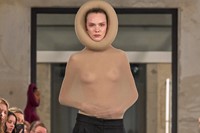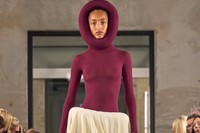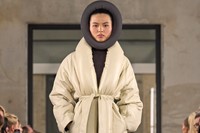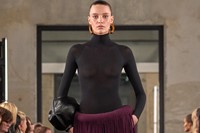Two days before his latest Alaïa show, in the house’s vast new atelier in the 11th arrondissement of Paris, Pieter Mulier is talking about time. Which is a distinctly Alaïa concept; Azzedine Alaïa himself took time, only showing his clothes when they were good and ready, regardless of where the rest of the fashion industry may be, metaphorically or physically. As regularly irregular as clockwork, a few weeks after everyone else showed their clothes, I would receive a summons and come to Paris to see what Azzedine had cooked up as the final say on the season. It had been that way since the early 1990s. Alaïa nods to it today by eschewing conventional seasonality – while everyone else was showing Autumn/Winter fashions, Alaïa calls theirs Summer/Autumn. Rules be damned!
Yet what made Mulier interested in time, this time, was none of that industry stuff. Rather, it was the work of the Dutch artist Mark Manders, whose statues punctuated the show space. “Every look is a sculpture,” said Mulier. He didn’t mean they look like statues – rather, that each look, with its complex construction methods, stood away and around the body, creating its own shapes. Calling Manders an inspiration is wrong, but Mander’s bronzes, crafted to look like works in progress that could be from any age from Etruscan to Belle Èpoque, also triggered something ideological in Mulier’s brain. “His work talks about history, and how time has no grasp on the idea of beauty,” Mulier mulled. “Beauty is timeless. That, for me, is ultimate Alaïa.”
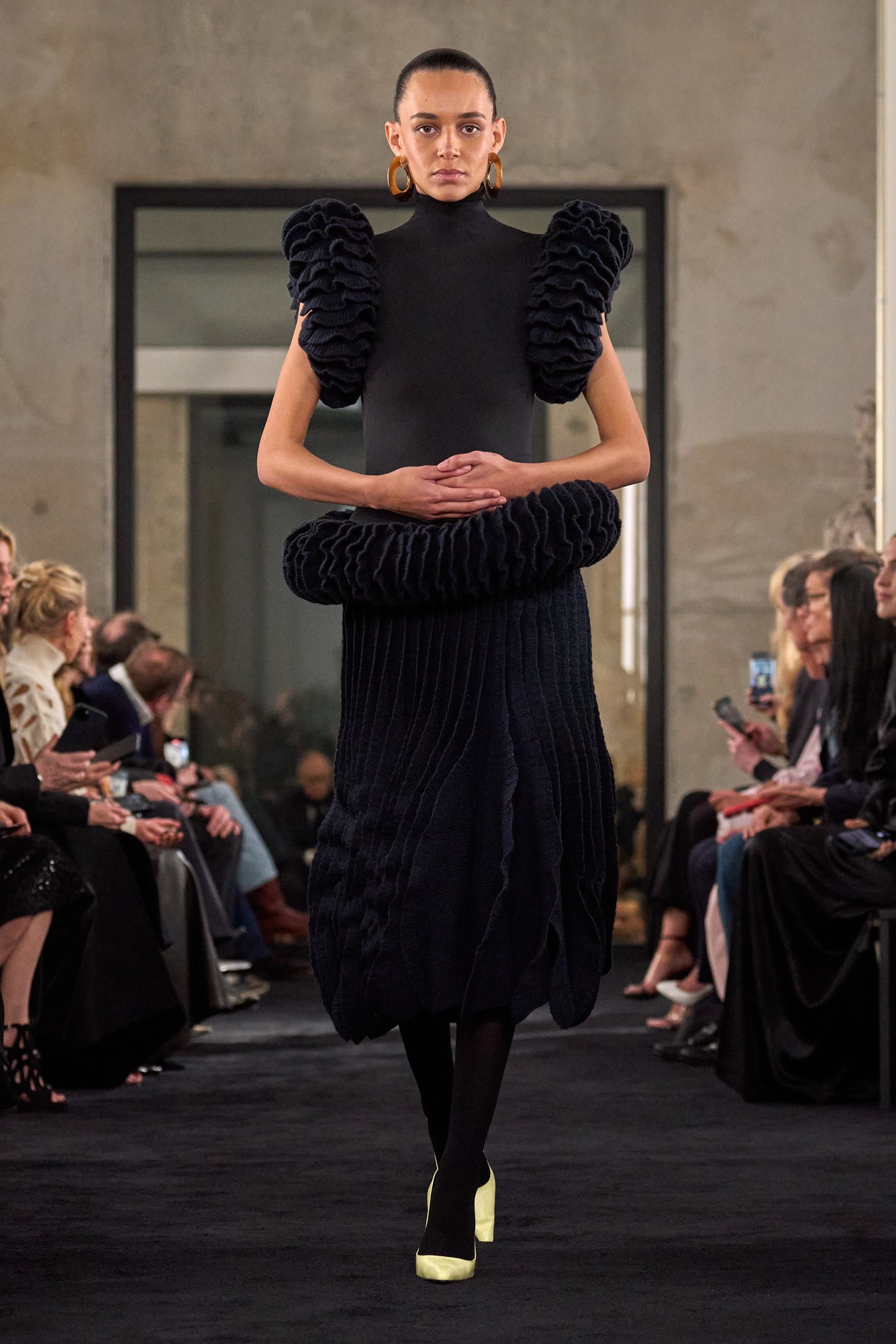
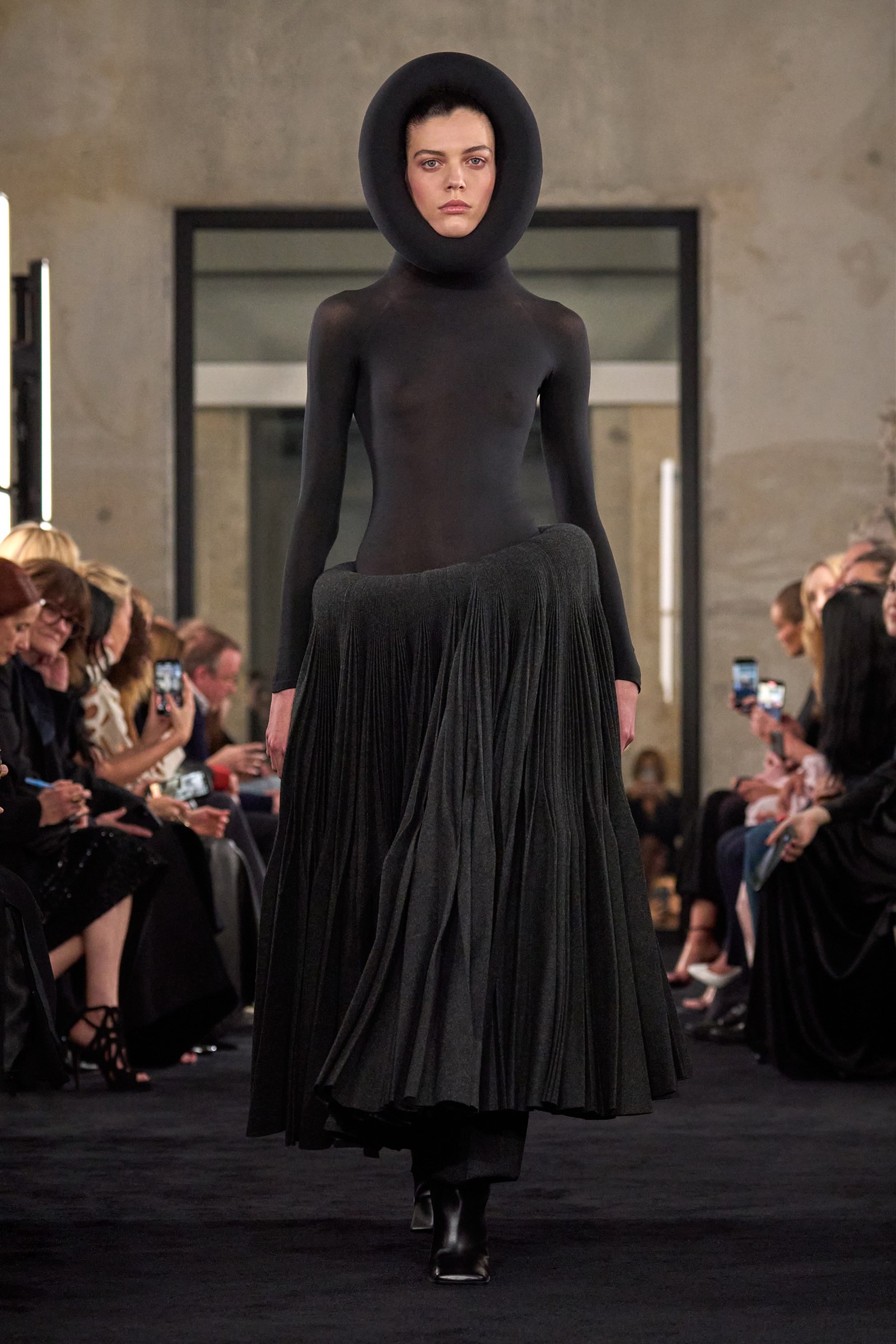
There are two ways to express a timeless beauty in fashion: one is to rinse your clothes of reference to any epoch, creating pieces that cannot be anchored in a specific time or place. The other, which is much more complex and far rarer, is to embed your clothes with multiple histories, details and shapes vocative, simultaneously, of legion periods and geographies, that wind up scrambling the brain, sending it whirring to compute exactly what you’re seeing. That’s the route Mulier took, his garments gesturing to different histories and cultures through their silhouettes. Take the intricately pleated skirts with padded hips – depending on your frame of mind, you could see an Elizabethan farthingale, the hourglass and swirling yardage of Dior’s New Look, or the bulky pollera of Peruvian national costume. There was time travel and shifting around the world, too: framed faces could be North African hoods, or Northern European portraits. “There are no limits,” said Mulier. “There’s a universality.”
“Alaïa is always about empowering women. This is a statement about women. I think at this point in time, making something that celebrates women and celebrates the freedom of women is the right thing to do” – Pieter Mulier
Mulier evidently reasoned it was also about time to push his Alaïa a little further. As with Azzedine before him, Mulier has set the trend, and his clothes have inspired many copies, at different levels. This was an ambitious, experimental and forward-thrusting show, and the complexity here was intense, with garments pleated and intricately seamed so a collar may magically twist and rise up to conceal a face, or knits curled around the form, rounded at the shoulders and constantly emphasising curves. There wasn’t a hard line in the place, except maybe for ridges of gilded metal that added structure to Alaïa’s diaphanous plisse evening dresses.
For all their period-hopping, the striking thing about these clothes – and the ideas behind them – were how rooted they seemed in the now. Mulier kept using words like rooted, and protected, even armour, and his show notes – written in his own voice – contained a prescient line: “Your body is yours.” It’s impossible not to connect that to the rhetoric around women’s bodies, especially in the United States. On November 6, after the 2024 US election results, the white supremacist, misogynistic, and antisemitic commentator named Nick Fuentes wrote a post on X.com that simply read “Your body, my choice. Forever.” It’s a simple yet repulsive phrase, an anachronistic throwback to periods when men controlled women, exchanged them like goods, that should have no relevance today but sadly resonates. Hence the fact Mulier’s women were cocooned and protected, padded and buttressed, their clothes built up around them in leathers, soft wools, cosseting and shielding them. But they weren’t shy and retiring, nor victims. These were clothes for women to go to war in. Which is exactly what Azzedine Alaïa created too, with his leather-clad Amazons. Plenty didn’t understand at the time – they thought Alaïa’s sexual provocation was a man projecting onto women. But rather, in the words of Tina Turners, “Alaïa gave us back our bodies.” Mulier sought to do the same.
“Alaïa is always about empowering women,” Mulier said. “This is a statement about women. I think at this point in time, making something that celebrates women and celebrates the freedom of women is the right thing to do.”


